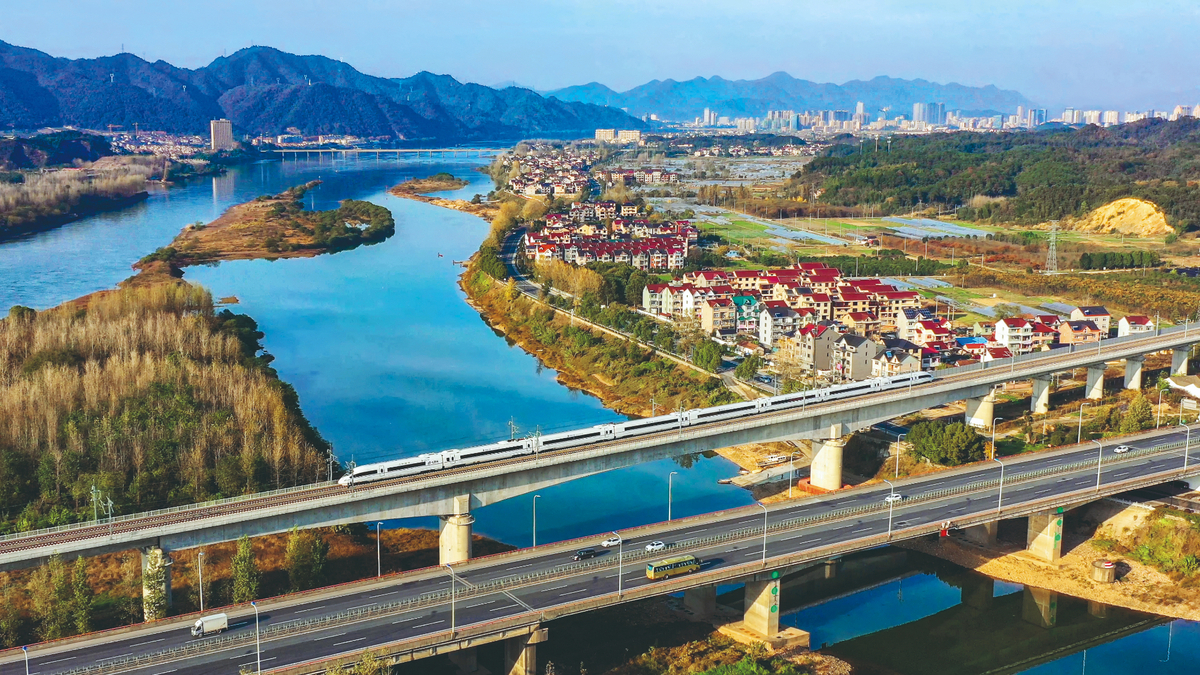
There has been significant online discourse surrounding the central government's decision to relocate numerous industries from the eastern coastal regions to the central and western parts of the country. Most have given a thumbs-up to the decision, though some have been skeptical, doubting the decision can be fully implemented.
Recently in a document to boost high-quality employment, the central authorities revealed their intention to facilitate the transfer of funds, technologies, and labor-intensive industries from the more developed eastern regions of the country to the underdeveloped western areas. This guidance is widely perceived as being strategically significant, given the existing economic imbalance within the nation, rising labor costs along the coast, and the global geopolitical uncertainties.
READ MORE: Chinese premier urges new achievements in high-quality development
This forthcoming shift would be the third instance of a government-driven east-to-west industry transfer in the past century.
The two previous transitions were prompted by wartime circumstances or the fear of imminent conflict. The first occurred in the 1930s and 1940s when Japan invaded and occupied the eastern and central regions of China. The second shift took place during the 1960s and 1970s, driven by concerns of potential attacks from the north and the east. During this period, China relocated many key industries, particularly military-related ones, to regions about 2,000 kilometers away from the coast or the northern border.
Nevertheless, I believe that this time the central government's initiative to incentivize industries to transition to the underdeveloped western regions primarily aims to achieve more balanced national economic development between the eastern and western parts of the country, ultimately enhancing the quality of life for the entire population.
The eastern coastal areas have historically enjoyed economic advantages due to their accessible harbors and favorable conditions for foreign investments, particularly since the initiation of China's reform and opening-up policies over four decades ago. Despite less than 40 percent of the population residing on about 40 percent of the country's landmass, the eastern region has consistently contributed over 50 percent of the national GDP over the past three decades.
Escalating labor and raw material costs, sourced predominantly from the resource-rich western regions, have prompted labor-intensive enterprises in the east to proactively shift their production to western China or other nations to reduce expenses in recent years. Labor costs in western areas typically amount to less than two-thirds of those in the east, with even lower costs prevalent in various Asian and African countries.
The ongoing government-led industry transfer is poised to benefit factory owners, ensuring their legal interests will be better protected. This relocation will inject substantial funds, advanced technologies, and millions of job opportunities into the expansive western territories. If the plan is effectively implemented, it should alleviate challenges faced by certain eastern enterprises grappling with labor shortages and high production costs, while also catalyzing economic growth in the under-invested western regions.
ALSO READ: Policies to advance Chinese modernization will also release new opportunities for world
In contrast to the State-directed factory relocations of the past, which were facilitated by the State-owned enterprises, the forthcoming transfer will rely heavily on preferential policies to encourage private enterprises and publicly traded companies to voluntarily shift operations westward.
While specific guiding policies are yet to be disclosed, I anticipate they will encompass preferential measures related to taxation, administrative fees, real estate pricing, streamlined registration processes, talent acquisition, and competitive labor costs.
I interpret this transfer as a pivotal stride in China's deepening reform and opening-up endeavors, with the potential to yield enduring benefits for the nation at large.
The author is former deputy editor-in-chief of China Daily.


